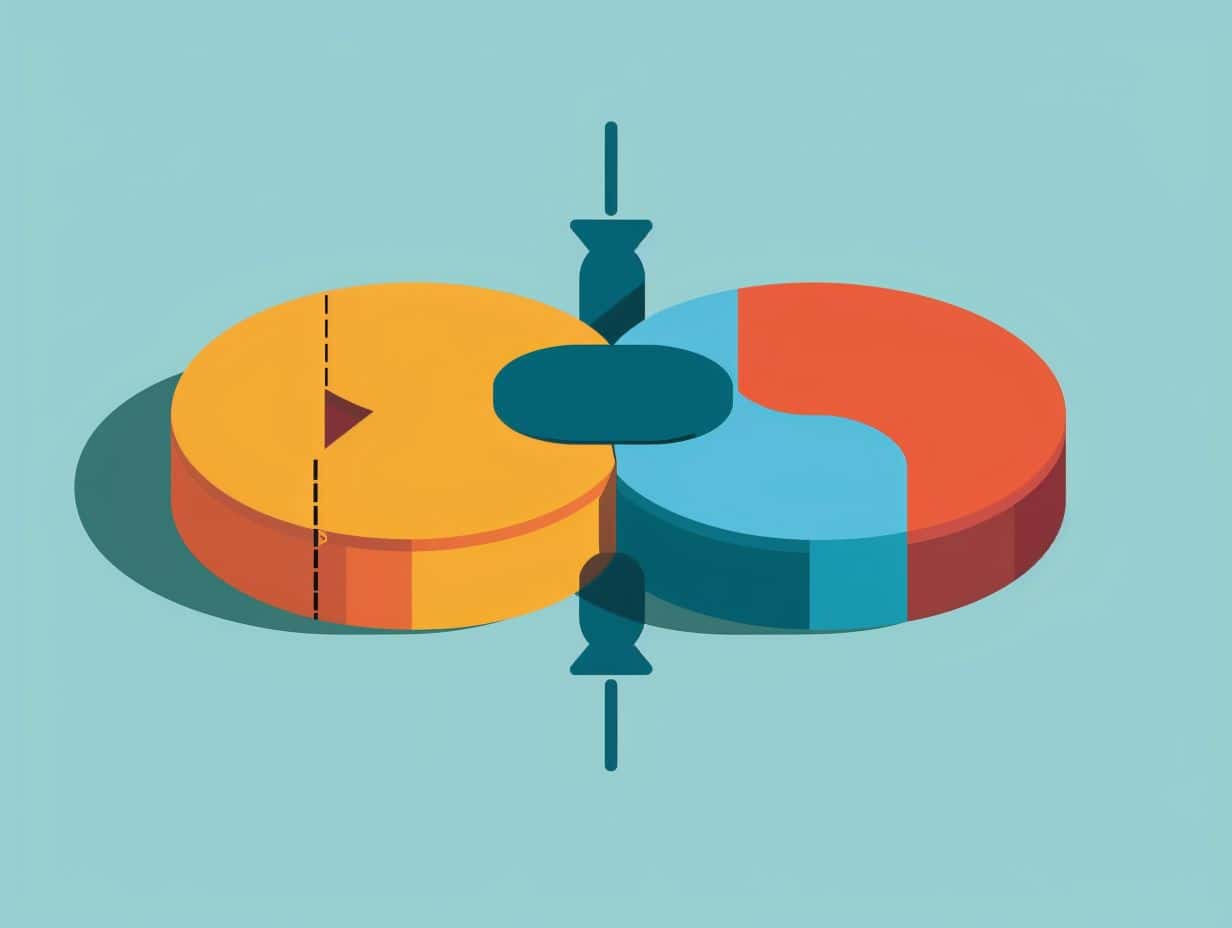- Our content is independently written and reviewed by trusted reviewers & fact-checkers.
- We can earn money by connecting you with top Gold IRA Companies. Learn how our reviews work.
- Want to learn more? Meet our authors and explore our editorial policy.
Considering a Keogh Plan for your retirement savings but unsure about the details? We explore what a Keogh Plan is, the different types available, the benefits it offers, and the eligibility criteria. We also discuss contribution limits, compare Keogh Plans with 401(k) Plans, and highlight the pros and cons. By the end, you’ll have a better understanding of whether a Keogh Plan is the right choice for you and tips for maximizing your retirement savings. 
Table of Contents
Key Takeaways:
- A Keogh Plan is a type of retirement plan for self-employed individuals and small business owners, designed to help them save for retirement and minimize taxes.
- The two types of Keogh Plans are Defined Benefit Plans and Defined Contribution Plans. The latter can include a 401(k) plan, providing more flexibility for retirement savings.
- Contributions to a Keogh Plan are subject to annual limits, and these limits can change each year. It is important to stay informed about these limits and consider consulting a financial advisor to determine the right retirement savings plan for your specific needs.
What is a Keogh Plan?
A Keogh plan, also referred to as an HR-10 plan, serves as a retirement savings tool specifically designed to assist self-employed individuals or small business proprietors in preparing for retirement. Governed by the regulations of the Internal Revenue Service (IRS), these plans can be established with the assistance of a financial advisor. Keogh plans provide significant tax advantages by permitting contributions to accumulate tax-deferred until reaching retirement age. Notably, one of the primary benefits is the higher contribution limits in comparison to Individual Retirement Accounts (IRAs), offering savers the opportunity to cultivate a more substantial retirement fund. Qualification for a Keogh plan generally necessitates the individual to possess self-employment income or manage a small business. This plan serves as a means for these individuals to enhance their retirement savings and engage in financial planning for their future under the guidance of a financial advisor.
Definition and Purpose
The Keogh plan, also known as an HR-10 plan, serves as a retirement account designed to facilitate tax-deferred growth for self-employed individuals and small business owners. Its primary objective is to offer a tax-efficient avenue for saving for retirement, enabling individuals to make employer contributions and establish a pension fund for their future financial security. Establishing a Keogh plan confers various tax benefits upon individuals. Contributions made to a Keogh plan are tax-deductible, thereby reducing the individual’s taxable income. Furthermore, any earnings accumulated within the plan grow tax-deferred until withdrawal, fostering the potential for compounded growth over an extended period. The Keogh plan encompasses two primary variants – defined-contribution and defined-benefit plans. Defined-contribution plans permit flexible contributions based on a percentage of income, whereas defined-benefit plans ensure a specific payout upon retirement determined by a predefined formula. Both plan types offer a structured approach to retirement planning and play a significant role in fortifying financial stability during post-retirement years.
Types of Keogh Plans
Keogh plans are categorized into two primary types: defined benefit plans and defined contribution plans. Defined benefit plans ensure a specific benefit amount upon retirement, whereas defined contribution plans entail contributions made by the employer and/or employee, such as profit-sharing plans and money purchase pension plans. Within a defined benefit plan, the employer commits to providing a predetermined retirement benefit based on factors like salary and years of service. Typically, the employee does not contribute to this plan, and the employer assumes the investment risks. Conversely, defined contribution plans, such as profit-sharing plans, permit both the employer and the employee to contribute to the retirement account, often with the employer matching a portion of the employee’s contributions. Money purchase pension plans entail fixed employer contributions, which are invested on behalf of the employee for future retirement benefits.
Defined Benefit Plans
Within a Keogh plan, a defined benefit structure establishes retirement benefits based on specific criteria such as salary history and length of service. Actuarial computations are utilized to ascertain the annual retirement benefit attributable to a plan participant. These calculations entail projections related to life expectancy, inflation rates, and investment yields to ensure the pension fund’s ability to fulfill its long-term commitments. Typically, the benefit sum corresponds to a fixed percentage of the participant’s average salary over their final years of service. It is worth noting that defined benefit plans within Keogh accounts afford participants a guaranteed income stream throughout their lifetime, delivering financial stability during retirement. Frequently, these plans are sustained through employer contributions, which enjoy tax-deductible status, rendering them a favorable retirement savings choice for self-employed individuals. 
Defined Contribution Plans
Defined contribution plans within a Keogh framework involve contributions made by the employer and/or employee, subject to specific limits established by the IRS. Some examples of such plans include solo 401(k) plans and SEP IRAs, which serve as tax-advantaged methods for retirement savings. Solo 401(k) plans are specifically designed for self-employed individuals who do not have any full-time employees. These plans offer higher contribution limits in comparison to traditional IRA accounts, allowing individuals to accumulate greater funds for retirement. Conversely, SEP IRAs are commonly favored by small business proprietors. Contributions to SEP IRAs are exclusively made by the employer, providing a straightforward avenue for retirement savings while concurrently reducing taxable income. Both solo 401(k) plans and SEP IRAs afford individuals with flexibility and autonomy in selecting investment options, equipping them to make astute decisions for their financial well-being.
Benefits of a Keogh Plan
Keogh plans present numerous advantages, including tax-deferred growth on contributions, a diverse selection of retirement investment options, and the flexibility to align financial decisions with individual objectives and circumstances. These plans can prove particularly beneficial for self-employed individuals and small business owners seeking to accumulate retirement savings while capitalizing on tax benefits. The availability of various investment options give the power tos investors to customize their portfolios according to their risk tolerance and financial goals. Keogh plans assume a vital role in comprehensive long-term financial planning strategies, offering a structured approach to cultivating a secure retirement fund. Contrary to traditional IRA accounts, Keogh plans often feature higher contribution limits, thereby fostering the potential for substantial savings growth over the long term.
Eligibility for a Keogh Plan
To qualify for a Keogh plan, an individual must meet the criteria of being a small business owner or self-employed and must comply with the specific IRS regulations that govern these retirement accounts. Seeking guidance from financial professionals can assist in determining eligibility and establishing the plan in an efficient manner. These retirement accounts serve as a tax-advantaged vehicle for self-employed individuals and small business owners to save for retirement. For eligibility, the business must satisfy certain conditions outlined by the IRS, such as deriving income from self-employment endeavors. Collaboration with financial advisors specializing in retirement planning can ensure that the Keogh plan is in adherence with IRS guidelines, thereby optimizing the benefits and potential tax advantages for the account holder.
Contributions to a Keogh Plan
Contributions to a Keogh plan may be made by either the employer, the employee, or both parties, subject to the contribution limits established by the IRS. These contributions offer tax advantages and can be strategically managed through a variety of financial instruments to enhance retirement savings. Employer contributions to a Keogh plan typically hinge on a percentage of the employee’s compensation, with the annual contribution ceiling being stipulated by the IRS. Conversely, employees have the discretion to make voluntary contributions within designated boundaries. One notable benefit of a Keogh plan is the tax-deferred growth of contributions until withdrawals are initiated during retirement. By leveraging financial tools such as investment options, asset allocation strategies, and periodic assessments, individuals can customize their Keogh plan to align with their retirement objectives and risk tolerance levels.
Maximum Contribution Limits
The Internal Revenue Service (IRS) establishes annual maximum contribution limits for Keogh plans, determining the highest allowable contribution amounts for both employers and employees. Strict adherence to these limits is essential to ensure compliance with the rules and regulations set forth by the IRS. For the present year, the IRS has designated these limits at $58,000 or 25% of the participant’s compensation, whichever amount is lesser. This stipulation permits employers to contribute up to the specified limit, while employees are also able to make contributions within this threshold. It is imperative to recognize that surpassing these limits can lead to penalties and tax consequences. By maintaining contributions within the prescribed boundaries, both the employer and employee can optimize their retirement savings while upholding legal compliance. 
Comparison with 401(k) Plans
Keogh plans and 401(k) plans share similar tax advantages, but they differ in contribution limits and eligibility criteria. Keogh plans can be particularly beneficial for self-employed individuals, as they offer greater control over retirement funds and potential tax benefits on taxable income. Individuals who are self-employed and choose Keogh plans may find the higher contribution limits favorable compared to traditional 401(k) plans. This higher limit enables them to allocate a larger portion of their income towards retirement savings. Keogh plans provide flexibility in terms of eligibility requirements, catering to a wider range of self-employed individuals, including small business owners and freelancers. Moreover, the tax implications of Keogh plans are attractive, as contributions may be tax-deductible, resulting in potential savings on current taxable income.
Pros and Cons of a Keogh Plan
Understanding the advantages and disadvantages of a Keogh plan is imperative for making well-informed financial decisions regarding retirement savings. While this plan presents tax benefits and investment opportunities, there are factors such as contribution limits and administrative obligations that necessitate thorough evaluation. A notable benefit of Keogh plans is the tax advantages they offer, allowing individuals to contribute funds from pre-tax income. This results in a reduction of their current taxable income and potentially lowers their overall tax obligations. The tax-deferral aspect of Keogh plans can effectively facilitate the accumulation of retirement funds. Moreover, Keogh plans provide flexibility in terms of investment choices, permitting account holders to diversify their portfolios across various assets. It is essential to acknowledge the contribution limits imposed on Keogh plans, which may constrain the amount individuals can save on an annual basis. Additionally, the administrative complexities associated with managing a Keogh plan might necessitate professional guidance, thereby increasing the overall cost and time commitment involved.
Keogh Plan Contribution Limits
It is essential to have a thorough understanding of the contribution limits associated with a Keogh plan in order to optimize retirement savings. The Internal Revenue Service (IRS) establishes annual contribution limits, which are subject to fluctuations from one year to the next. For instance, the 2023 and 2024 limits delineate the maximum allowable contributions to a Keogh plan for the respective years. This knowledge give the power tos individuals to strategically plan their contributions with a focus on long-term financial stability. Remaining informed about the IRS regulations is instrumental in maximizing retirement savings. By effectively leveraging the prescribed contribution limits, individuals can ensure that they are capitalizing on their Keogh plans, thereby positioning themselves for a secure retirement. It is prudent to seek guidance from financial advisors to ascertain the most optimal approach to structuring contributions within the permissible limits to align with one’s retirement objectives.
2023 Limits
The contribution limits for Keogh plans in 2023 establish the maximum allowable amount that may be contributed by both employers and employees during the tax year. A thorough comprehension of these limits is paramount for effective retirement planning and adherence to the regulatory guidelines set forth by the Internal Revenue Service (IRS). Employers play a crucial role in the contribution process for Keogh plans, as they possess the ability to make tax-deductible contributions on behalf of eligible employees. For the year 2023, the set limit stands at $61,000 or 25% of the eligible compensation, depending on which amount is lower. Conversely, employees also have the opportunity to contribute to their Keogh plans, with an additional limit of $19,500 applicable for the year 2023. To optimize their retirement savings within these prescribed limits, a strategic approach is necessary for both employers and employees, encompassing thoughtful consideration of allocation and investment choices to maximize the potential growth of their retirement funds.
2024 Limits
The contribution limits for Keogh plans in 2024 establish the maximum allowable contributions for that tax year, impacting both employers and employees. It is essential to remain well-informed about these limits to facilitate effective retirement planning and adhere to IRS regulations. Employers must carefully assess the extent to which they can contribute on behalf of their employees, as the prescribed limits delineate the total amount that can be apportioned. For employees, comprehension of these restrictions aids in making well-informed decisions regarding any additional voluntary contributions they may contemplate for their Keogh plans. To optimize retirement savings within these stipulated limits, individuals may consider diversifying their investments and utilizing catch-up contributions if eligible. Seeking advice from financial advisors can help tailor a retirement strategy that is in accordance with these Keogh plan limits. 
Tips for Retirement Savings
Effective retirement planning necessitates a comprehensive understanding of IRS regulations, prudent financial decision-making, and exploration of various retirement avenues to ensure a financially secure future. Seeking counsel from financial experts can furnish invaluable assistance in navigating the intricacies of retirement planning. It is imperative to stay abreast of the contribution constraints established by the IRS for retirement vehicles such as 401(k)s and IRAs, thereby maximizing savings within these thresholds to fully leverage tax advantages. Periodically reassessing and fine-tuning your investment portfolio in alignment with your risk tolerance and financial objectives can optimize your retirement funds progressively. Delving into an array of retirement alternatives, ranging from conventional pension schemes to contemporary investment instruments like index funds or annuities, give the power tos individuals to customize their retirement strategy to align with their specific requirements and inclinations.
Frequently Asked Questions
Can a Keogh plan include a 401(k) plan?
Yes, a Keogh plan can include a 401(k) plan. In fact, many Keogh plans offer a 401(k) option for individuals who want to contribute more to their retirement savings.
What is a Keogh plan?
A Keogh plan, also known as a self-employed or individual retirement plan, is a type of retirement plan for self-employed individuals or small business owners. It allows them to contribute pre-tax earnings to a retirement account.
Can a self-employed individual have both a Keogh plan and a 401(k) plan?
Yes, a self-employed individual can have both a Keogh plan and a 401(k) plan. However, the total contributions to both plans cannot exceed the annual contribution limits set by the IRS.
What are the benefits of including a 401(k) plan in a Keogh plan?
Including a 401(k) plan in a Keogh plan allows individuals to contribute more to their retirement savings, potentially reducing their taxable income and increasing their retirement savings. It also offers additional investment options and flexibility for retirement planning.
Are there any limitations to when a Keogh plan can include a 401(k) plan?
There are no specific limitations to when a Keogh plan can include a 401(k) plan. However, individuals must meet the eligibility criteria for both plans and ensure that the combined contributions do not exceed the annual limits set by the IRS.
Can a Keogh plan include a 401(k) plan for employees?
Yes, a Keogh plan can include a 401(k) plan for employees. However, the employer must meet certain eligibility requirements and follow the guidelines set by the IRS for offering a 401(k) plan to employees in a Keogh plan.










